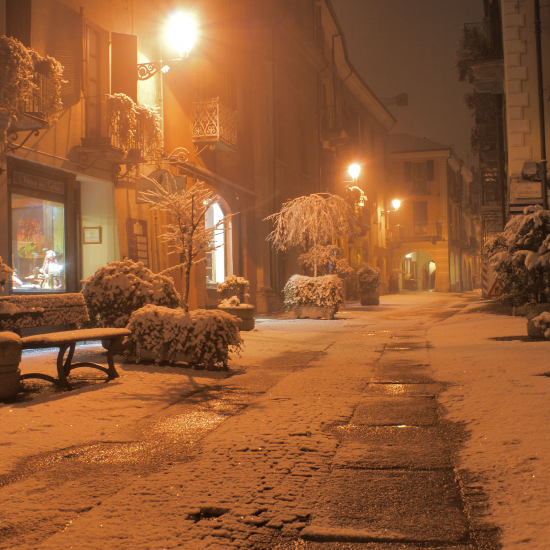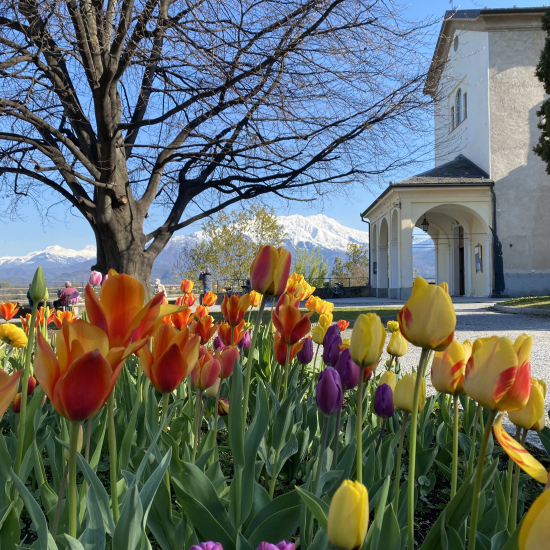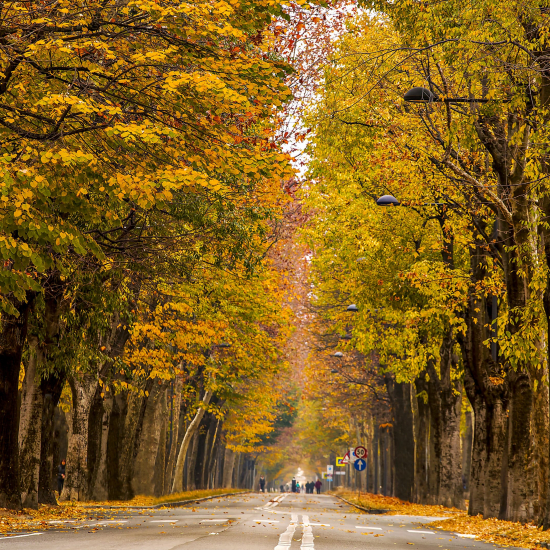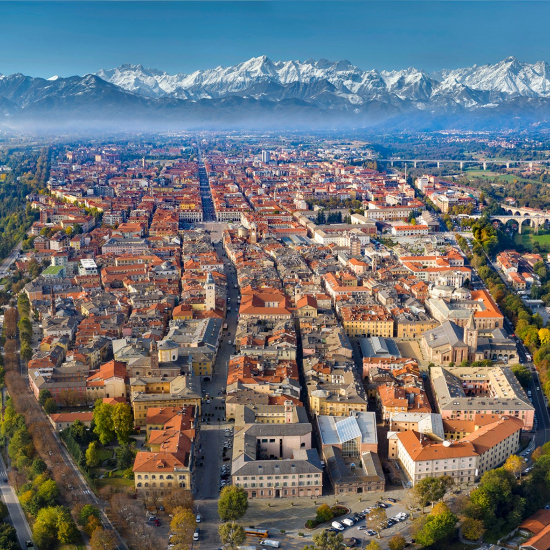Cuneo owes its name to the shape of the plateau on which the city stands, at the confluence of the Gesso and Stura rivers. It is a triangle, one point of which is set in the heart of the plain, while the other two open onto the mountains and the six beautiful valleys leading to France.
It is the city of seven sieges, untamed and rebellious, but also a salon city, characterised by a welcoming and hospitable atmosphere. Hundreds of metres of arcades make it a vast open-air shopping centre. The arcades start from Via Roma, the main street of the old city centre, to arrive at the vast and elegant Piazza Galimberti and proceed towards the modern geometry of the new city along Corso Nizza.
The large Piazza Galimberti is the heart of the city and home to the renowned Tuesday market. The square keeps alive the memory of the Resistance and the Medaglia d'Oro (Gold Medal) with which the city is honoured, because it is overlooked by the Casa Galimberti Museum, an ancient residence where the partisan hero Duccio Galimberti lived with his family.
To the south-west of the square we find Corso Nizza. It forms the extension of the porticoes of Via Roma and is striking for its precise and imposing arrangement of buildings that ideally lead to the road to France.
In the opposite direction, along the entirely pedestrianised via Roma, are the portals of the oldest churches, the Town Hall building and the houses of the old nobility. You can climb the Civic Tower, built in 1317, to admire a splendid panorama encompassing the town, the plain and the mountains.
The narrower side streets hide treasures such as the churches of Santa Chiara and Santa Croce, the Toselli Theatre and medieval palaces.
One of the most picturesque corners of Cuneo is Contrada Mondovì, with the synagogue of the former Jewish ghetto and where the Confraternity of San Sebastiano and the Diocesan Museum are also located.
In Piazza Virginio stands the grandiose monumental complex of the former Church of San Francesco, which houses the archaeological and ethnographic collections of the Museo Civico.
The new Piazza Ex Foro Boario, a large pedestrian area, is overlooked by the Casa del Turismo (Tourism House), headquarters of the ATL del Cuneo and the IAT (Tourist Information and Reception Office).
The city, with 1,350,000 square metres of public green space and almost 13,000 trees, offers many possibilities for green getaways. For example, a relaxing stroll along the tree-lined avenue streaked with light and shadow of Viale degli Angeli, or hiking and cycling in the Gesso and Stura River Park that surrounds the city. A panoramic lift, also available to cyclists, links the historic centre to the equipped areas of the river park.
All this makes Cuneo the 'Green Capital of Piedmont'. Contributing to this title is not only its geographical position, with the mountains so close by and the Gesso and Stura River Park as its crowning glory, but also the attempt to make it greener, starting right from the city and its urban areas. Thus in recent years, amidst new constructions, renovations and redevelopments, gardens, green areas, flowerbeds, small parks and the 9 hectares of the 'Ferruccio Parri' urban park, the city's new green lung, have flourished.
A national top environmental performance, high number of trees in the urban area Urban Ecosystem 2022, the special ranking of Italy's green cities by Legambiente
Surrounded by an imposing Alpine amphitheatre, less than an hour from the province's main ski and summer resorts, the town is an ideal starting point for exceptional outdoor experiences.





